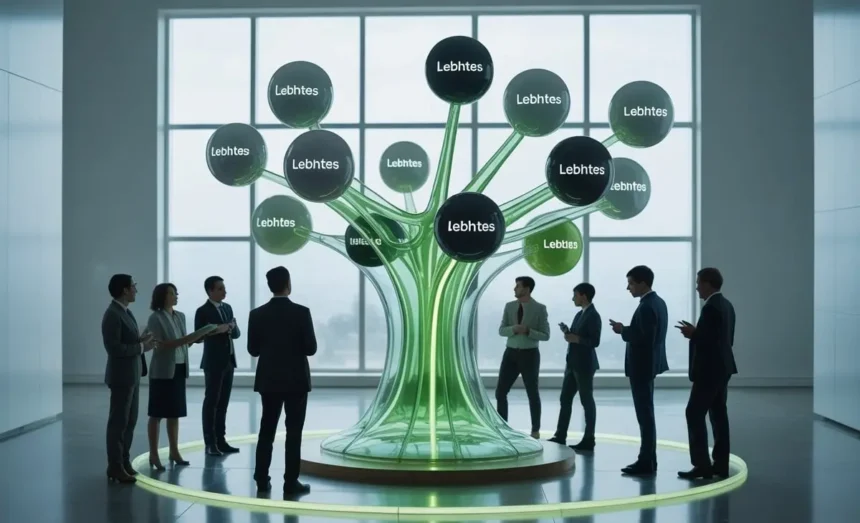Navigating the complexities of modern business requires more than just a good idea; it demands a clear path forward. Many organizations struggle with aligning their day-to-day operations with their long-term strategic goals. This disconnect can lead to wasted resources, missed opportunities, and stalled growth. A solid framework is essential for transforming ambitious visions into tangible results.
Lebhtes is a strategic framework designed to bring clarity, structure, and direction to your organization. It provides a systematic approach to aligning your team, refining your processes, and fostering a culture of continuous improvement. By adopting the principles of Lebhtes, businesses can build a resilient foundation for achieving sustainable growth and maintaining a competitive edge. This post will explore the core components of the Lebhtes framework and demonstrate how it can drive your organization toward success.
Understanding the Lebhtes Framework
Lebhtes is a business methodology that integrates key principles of lean management, behavioral science, and systems thinking. The name itself is an acronym representing its seven core pillars: Lean, Empowerment, Behavioral Alignment, Holistic View, Transparency, Evolution, and Sustainability. Each pillar addresses a critical aspect of organizational health and performance, working together to create a cohesive and powerful system for growth.
The primary goal of Lebhtes is to help businesses eliminate waste, optimize processes, and build a culture where every team member is engaged and aligned with the company’s mission. It moves beyond traditional top-down management by empowering employees at all levels to contribute to innovation and problem-solving. This creates a dynamic and adaptable organization capable of thriving in a constantly changing market.
The Seven Pillars of Lebhtes
The strength of the Lebhtes framework lies in its seven interconnected pillars. Let’s look at each one in more detail to understand how they contribute to a well-functioning organization.
Lean Principles
At its core, Lebhtes embraces the philosophy of lean management, which focuses on maximizing customer value while minimizing waste. This involves identifying and eliminating any activity that doesn’t add value to the final product or service. By streamlining processes and optimizing resource allocation, organizations can improve efficiency, reduce operational costs, and deliver higher-quality outcomes. Applying lean principles requires a commitment to continuous improvement and a critical eye for identifying inefficiencies.
Empowerment
True organizational agility comes from empowering your team. The Lebhtes framework emphasizes decentralizing decision-making and giving employees the autonomy to take ownership of their work. When team members feel trusted and valued, they are more likely to be proactive, innovative, and committed to the company’s success. Empowerment fosters a culture of responsibility and encourages creative problem-solving at all levels of the organization.
Behavioral Alignment
For any strategy to be effective, the behaviors of your team must be aligned with your organizational goals. Lebhtes incorporates principles of behavioral science to understand what motivates employees and how to create an environment that encourages desired actions. This involves setting clear expectations, providing regular feedback, and designing incentive systems that reward collaboration and performance. When individual behaviors are in sync with the company’s vision, the entire organization moves forward in a unified direction.
Holistic View
Organizations are complex systems where every part is interconnected. The Lebhtes framework encourages leaders to adopt a holistic view, considering how decisions in one area will impact others. This systems-thinking approach helps prevent the siloed mentality that often plagues large companies. By understanding the relationships between different departments and processes, businesses can make more strategic decisions that benefit the entire organization and avoid unintended negative consequences.
Transparency
Transparency is the bedrock of trust and collaboration. Within the Lebhtes framework, open communication and the free flow of information are essential. This means being transparent about company performance, strategic goals, and decision-making processes. When employees have access to the information they need to do their jobs effectively, they feel more connected to the company’s mission. A culture of transparency also makes it easier to identify and address problems quickly.
Evolution
The business world is in a constant state of change. Organizations that fail to adapt will be left behind. The pillar of Evolution within Lebhtes is about fostering a culture of continuous learning and adaptation. This involves encouraging experimentation, embracing feedback, and being willing to pivot when necessary. An evolutionary mindset ensures that the organization remains resilient and capable of seizing new opportunities as they arise.
Sustainability
The final pillar, Sustainability, brings everything together. It refers not only to environmental responsibility but also to creating a business model that is viable for the long term. This means balancing short-term wins with long-term strategic objectives. A sustainable organization is one that is financially stable, operationally efficient, and has a strong, positive culture. By focusing on sustainable growth, businesses can ensure their success for years to come.
How to Implement Lebhtes in Your Organization
Adopting the Lebhtes framework is a transformative journey that requires commitment and a clear plan. Here are five steps to get started:
- Assess Your Current State: Begin by evaluating your organization against the seven pillars of Lebhtes. Identify your strengths and weaknesses to understand where you need to focus your efforts.
- Educate Your Team: Ensure that everyone in your organization, from leadership to the front lines, understands the principles of Lebhtes and why the change is necessary.
- Start with a Pilot Project: Instead of attempting a company-wide overhaul at once, select a specific department or process to pilot the Lebhtes framework. This allows you to test the principles and make adjustments in a controlled environment.
- Measure and Refine: Continuously track your progress using key performance indicators (KPIs) related to efficiency, employee engagement, and customer satisfaction. Use this data to refine your approach.
- Scale Across the Organization: Once you have demonstrated success with your pilot project, you can begin to scale the Lebhtes framework across the entire organization.
Chart Your Path to Success
Implementing a new framework like Lebhtes is a significant undertaking, but the rewards are well worth the effort. By embracing its seven pillars, organizations can achieve a new level of clarity, efficiency, and alignment. The result is not just improved performance but a resilient and adaptive culture poised for sustainable, long-term growth.
Building a stronger, more effective organization starts with a single step. By applying the principles of Lean, Empowerment, Behavioral Alignment, Holistic View, Transparency, Evolution, and Sustainability, you provide your team with the tools and the structure needed to navigate challenges and drive success.

















